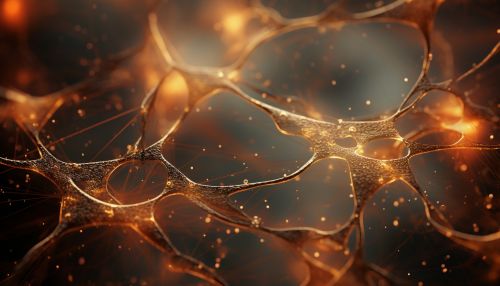Neuropharmacology
Overview
Neuropharmacology is the study of how drugs affect cellular function in the nervous system, and the neural mechanisms through which they influence behavior. This field of research focuses on the interactions of neurotransmitters, neurons, and drugs in both the central and peripheral nervous systems.


History
The field of neuropharmacology has its roots in the early 20th century, with the first major breakthroughs occurring in the 1950s. The discovery of the first psychotropic drugs and the identification of neurotransmitters like dopamine and serotonin marked the beginning of a new era in the understanding of the brain and its functions.
Neurotransmitters and Receptors
Neurotransmitters are endogenous chemicals that enable neurotransmission. They transmit signals across a chemical synapse, such as a neuromuscular junction, from one neuron (nerve cell) to another "target" neuron, muscle cell, or gland cell. Neurotransmitters are released from synaptic vesicles in synapses into the synaptic cleft, where they are received by neurotransmitter receptors on the target cells. Many neurotransmitters are synthesized from simple and plentiful precursors such as amino acids, which are readily available from the diet and only require a small number of biosynthetic steps for conversion.
Pharmacodynamics
Pharmacodynamics is the study of how a drug affects an organism, whereas pharmacokinetics is the study of how the organism affects the drug. Both together influence dosing, benefit, and adverse effects. Neuropharmacology is a very broad region of science that encompasses many aspects of the nervous system from single neuron manipulation to entire areas of the brain, spinal cord, and peripheral nerves.
Clinical Neuropharmacology
Clinical neuropharmacology focuses on the study of drugs and their use in the treatment of neurological disorders, such as epilepsy, Alzheimer's disease, Parkinson's disease, and major depressive disorder. This field has been particularly important in developing and understanding the mechanisms of action of new drugs for treating neurological disorders.
Neuropharmacological Agents
Neuropharmacological agents can be divided into two main categories: psychoactive drugs and neuromodulators. Psychoactive drugs are chemicals that affect the function of the central nervous system, altering perception, mood, consciousness, cognition, and behavior. These drugs may be used recreationally to purposefully alter one's consciousness, as entheogens for ritual or spiritual purposes, as a tool for studying or augmenting the mind, or therapeutically as medication.
Future of Neuropharmacology
The future of neuropharmacology promises to bring new understanding in the treatment and prevention of a number of neurological disorders. With the advent of new genetic and imaging techniques, we are beginning to have a better understanding of the complex interplay between genes, environment, and brain function. This will undoubtedly lead to the development of new and more effective treatments for a variety of neurological disorders.
